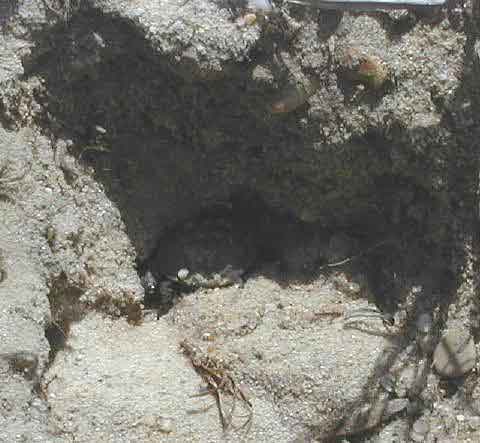Canine Depredated and Desiccated Over-Wintered Terrapin Nest
Drought has real consequences on wildlife, and this morning I discovered its brutal effect on 33 over-wintering terrapin hatchlings. The Cape has been precipitation poor for several months, and while residents have been blessed with pleasant sunshine, the ground has become exceedingly parched. You may recall on Friday we discovered a live, but seriously dehydrated hatchling in a coyote predated nest on Lieutenant Island’s Turtle Point — along with several desiccated hatchling remains. So, today we patrolled another section of the south Lieutenant Island marsh to see if there were any other exposed nest sites.
We found three within a 20-foot sandy stretch between the wrack line and an abutting bearberry hill. In each case, the predator had dug until it reached the first desiccated remains, then broke off the predation and left the rest of the nest chamber intact.
Second Desiccated Over-Wintered Terrapin Nest
As I excavated below the exposed egg, I discovered over-wintering hatchlings which had pipped, but remained inside their shells. The first nest contained 8 dead, the second had 13 remains and 2 non-viable eggs, and the third held 12 desiccated hatchlings. None had been disturbed by the predator once the initial dried-out turtle was encountered.
Third Desiccated Over-Wintered Terrapin Nest
Hatchlings were normal in every way, and the condition of the nest chamber, the eggs and the babies precisely matched the pipped babies we rescued in the fall — with one fatal difference. These were all completely dehydrated, presumably caused by the spring’s lack of precipitation. Today’s discovery coupled with Friday’s may prompt us to rethink our fall nest strategy. We had become more aggressive in recovering pipped hatchlings once we found pervasive fly maggot predation last year. We’ll now need to weigh the pros and cons of over-wintering nests. True, we lost these nests to drought conditions. But it seems likely that had not the drought intervened, these hatchlings would have been consumed by predators.






















